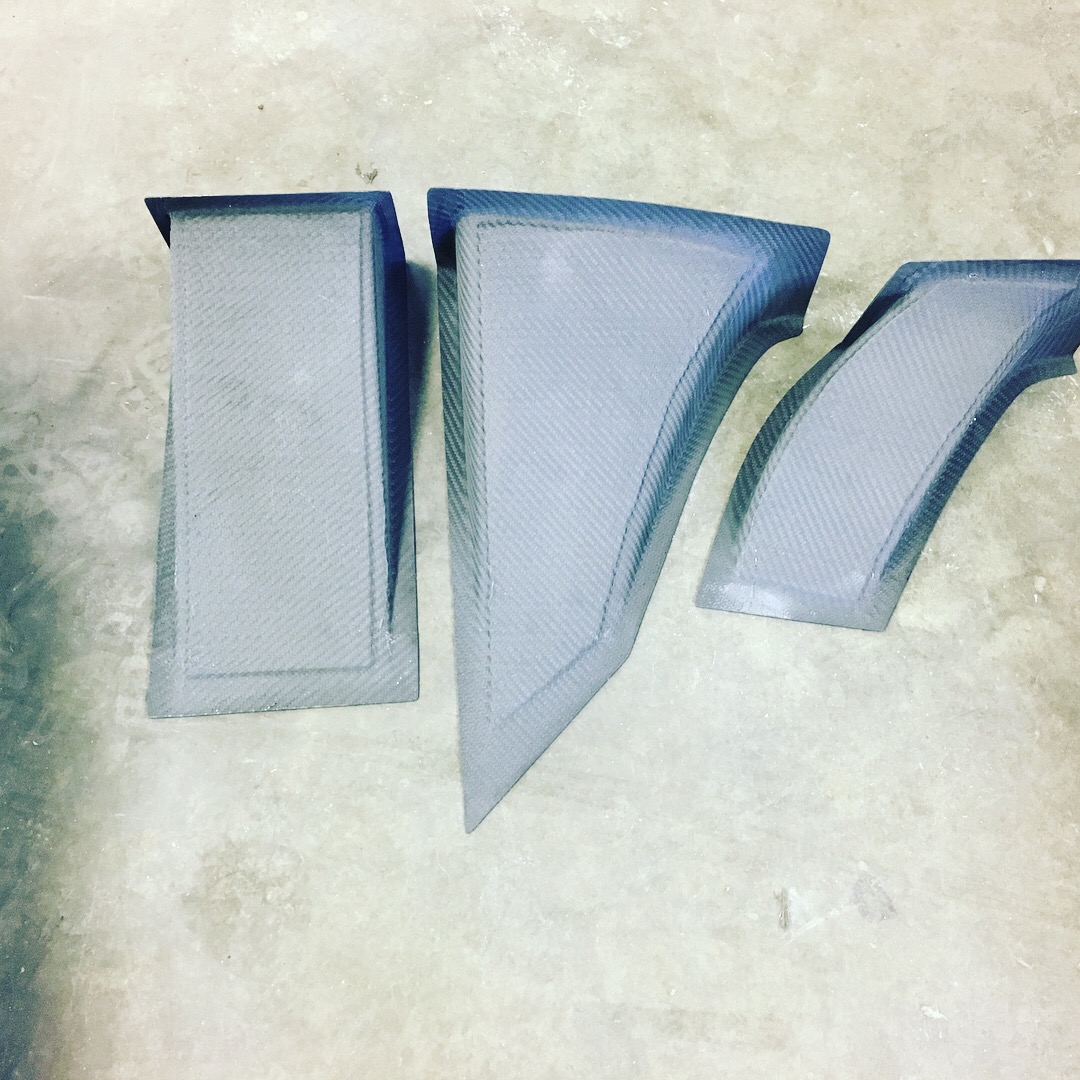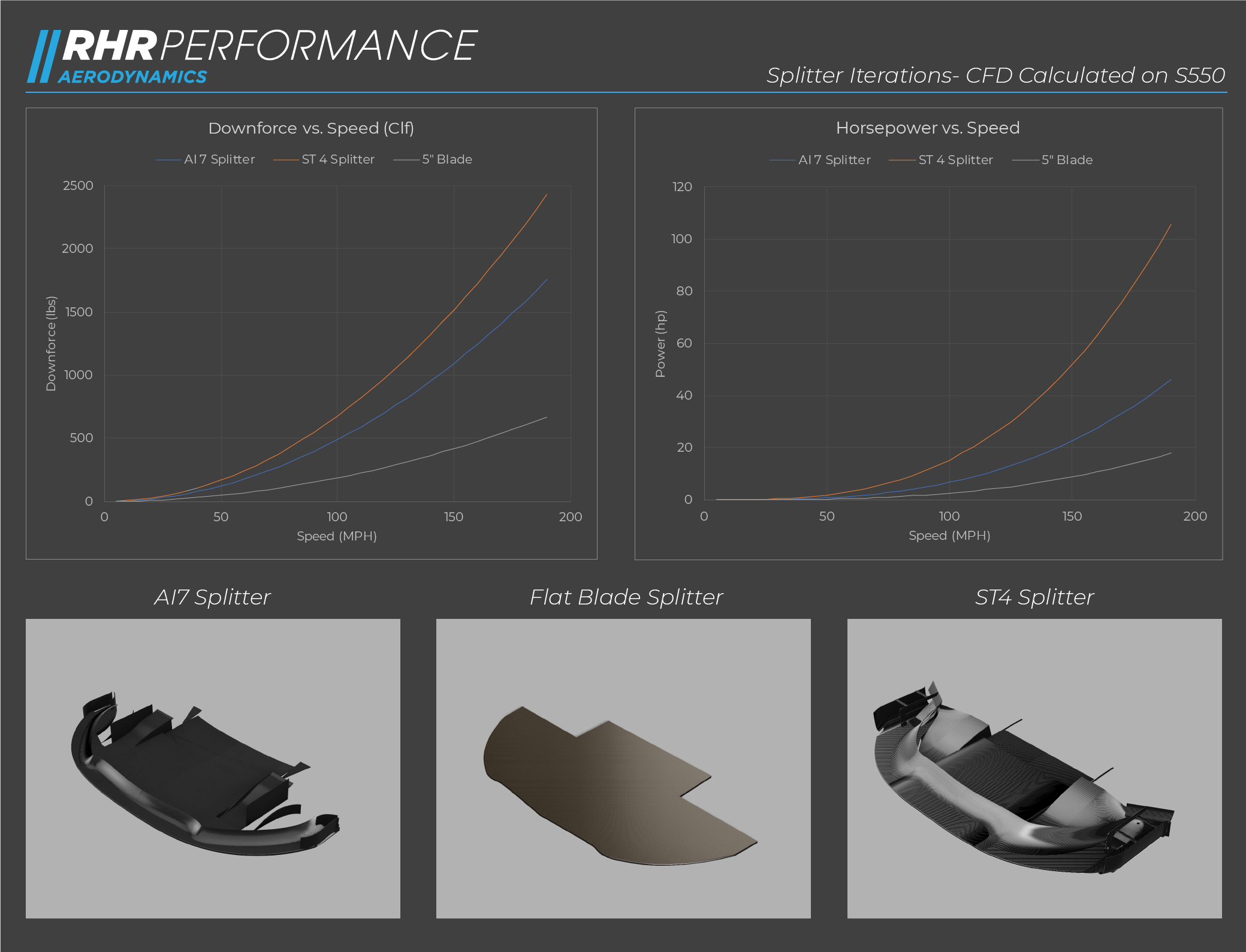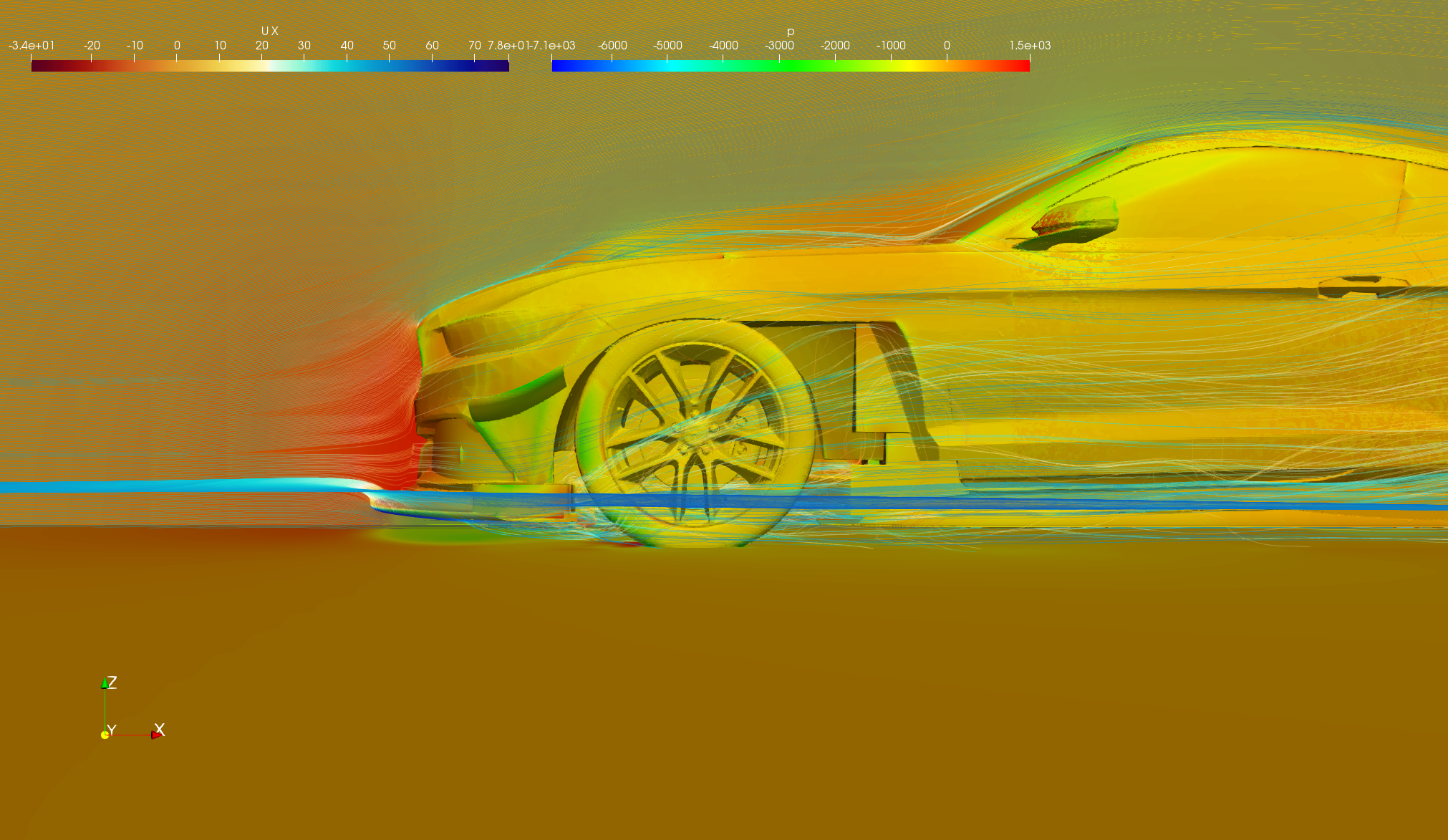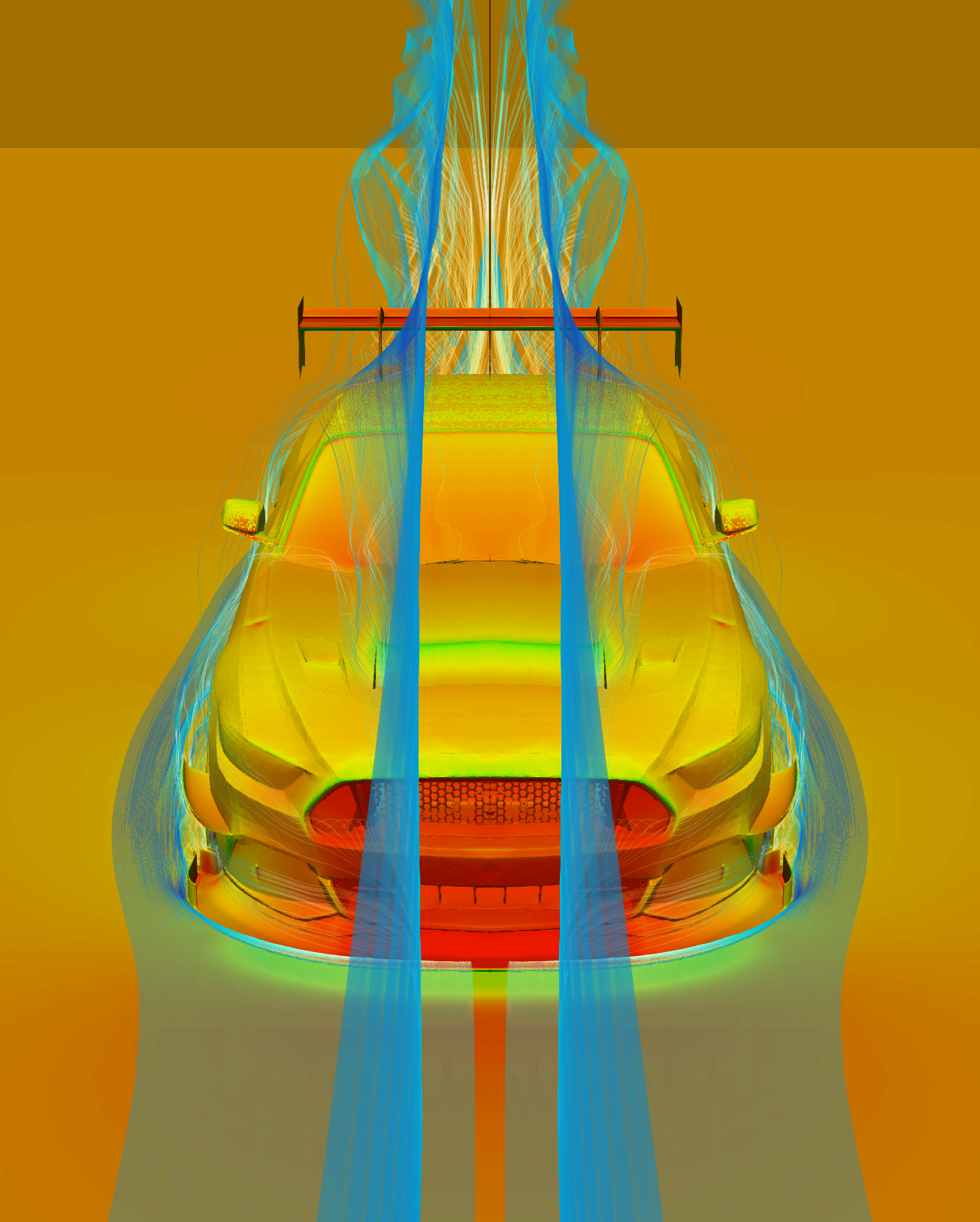This post is covering the splitter for Crusher. As you know from Part 1 and Part 2, there are two aero packages- the AI legal package, and the ST legal (virtually unlimited) package.
This post is a bit brief, as we’ll cover splitters in several parts since we’ve learned so much and have generated a massive amount of data, including pitch and ride sweeps and their impact on the performance of the individual aerodynamic components, as well as the center of pressure/aero balance.
So, easy enough- design two splitters. Before proceeding, we had an idea about the leading edge of the splitter and reached out to the NASA National AI Director. We showed him a CAD mockup and he immediately said:
“hell no”
However, he agreed to reach out to the regional directors and conduct his own research, and came back and said “OK, that would be legal”. Huge grin on our face. The leading edge is top secret for now (until our first customer gets one, then it’s public of course), but the performance is very good-
Splitter CFD
During the CFD runs, when we were kicking around the lunch table and talking about simple flat splitters and the cost of expensive splitters, the reluctance for people to buy them for fear of crash damage, etc. we wondered how much DF a flat blade (made from plywood or carbon) would produce so we sketched up a nice flat blade splitter following the contours of the bumper, 5”, 76.5”- totally AI legal, and sent the file over to Kyle to run through his cluster of CFD machines churning away at Crusher. He told us straight away a coefficient that he guessed during our skype call, and damn if he wasn’t within a couple of points when the results came back. Though, the splitter interacted very well with the canards, the canards made a couple of points more DF than with the complex AI splitter- probably because there was a nice smooth surface under the canard for a negative pressure gradient.
Pressure Plot
So, what we learned was simple flat splitters made from plywood, aluminum, carbon fiber, or any other material, is that they will never perform as well as a splitter with tunnel elements, a properly designed leading edge, end plates and slots to deal with the vortices, and attention given to the canard interaction. We've learned that the underside of the splitter is the most important bit. The suction effect is amazing, as you can see from this streamline seed.
Suction on AI7 Splitter- Leading edge is classified "Top Secret"
We believe (and hope) when racers start to use real splitters to balance their expensive and pretty wings that run at nearly 0 AOA, a light bulb will go off in their head and they'll realize what downforce is all about. Yeah, it will be a pain loading on and off the trailer, and try not to drive off track, but you can't argue with the math.
AI Iteration of Crusher. Coming to a track near you.
Our Tunnel elements that were designed for this splitter are now available. You can check them out HERE.






